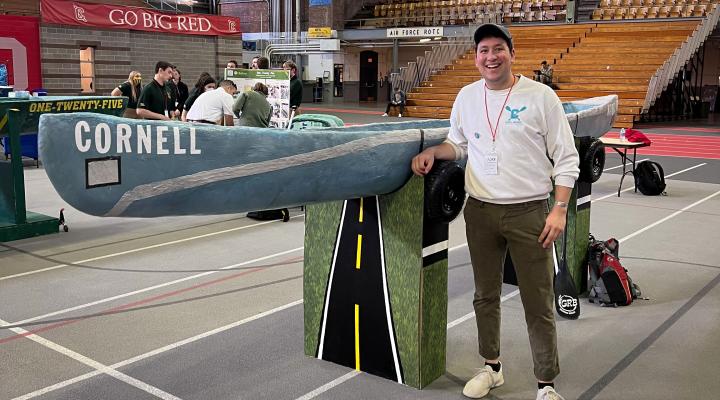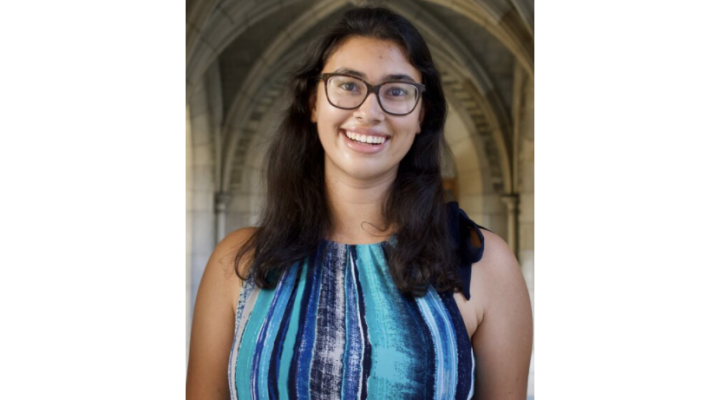Andrea Bowring chose Cornell Engineering for its university setting. "I wanted a great engineering school," she says, "but one that was contained in a full-service university so I could take classes in other things that I was interested in, as well as meet people who were interested in all sorts of things."
She worried that with Cornell's size, she might not get much personal attention, but says everyone has been very helpful. "Now that I am here, I have only noticed the benefits of such a large student body," she says, "such as the multitude of highly talented, diverse student groups and competitive intramural sports."
Bowring plays on the Cornell women's Ultimate Frisbee team, the Wild Roses. "When I came and visited I practiced with them and they were really cool," she says. "It's pretty competitive. The top two at regionals make it to nationals and we're hoping to do that."
She also plays viola in Cornell's symphony orchestra, which plays two concerts each semester. "It's a completely different kind of concentration and focus than I have to spend on school work or ultimate," says Bowring. "The two hours when I'm there I'm not worried about anything else except making music."
In high school, Bowring liked math and science, but wasn't sure what she wanted to do, so she attended Cornell Engineering's CURIE Academy, which brings high school students to campus for a week to explore engineering disciplines. "I thought material science was pretty cool because it combines a lot of fields—physics and chemistry, and a lot of other things," she says. "And it's broad, so you can do what you want with it and focus in on one thing. I'm interested in electronic materials."
Bowring has been working in Professor R. Bruce Van Dover's lab, helping to develop thin film catalysts for fuel cells. "I personally have been working on using X-ray diffraction to analyze different compositional spreads of different metals," she says. "I feel like I'm learning a lot. I have a class that's teaching X-ray diffraction while I'm doing it, so it complements it really well."
This summer, Bowring plans to research electronic ceramics, which can have applications in microwave communication systems, at the University of Pennsylvania, through the National Science Foundation's Research Experiences for Undergrads program. Last summer she had an REU at Drexel University, researching dispersing liquid crystals into a conducting polymer. "The long-range goal is to create an optoelectrically active film that is flexible and transparent which could be used in solar cells or photoluminescent devices," she says. "You could paint it on your windows and your windows would generate solar power but you could still get light through."
Bowring is a member of Women in Material Science and Engineering, or WIMSE, which works to get more women interested in materials science. "I've been in advanced math since sixth grade. I was the only girl in the class for a few years," she says. "I wish that there were more women in engineering for the sake of women and science, but I don't find it a difficulty."
Cornell's location has been an added bonus for Bowring. "If you go one direction there are these beautiful rural fields and parks," she says. "And in the other direction you have Ithaca, which has a lot of culture and attitude for such a small city."




